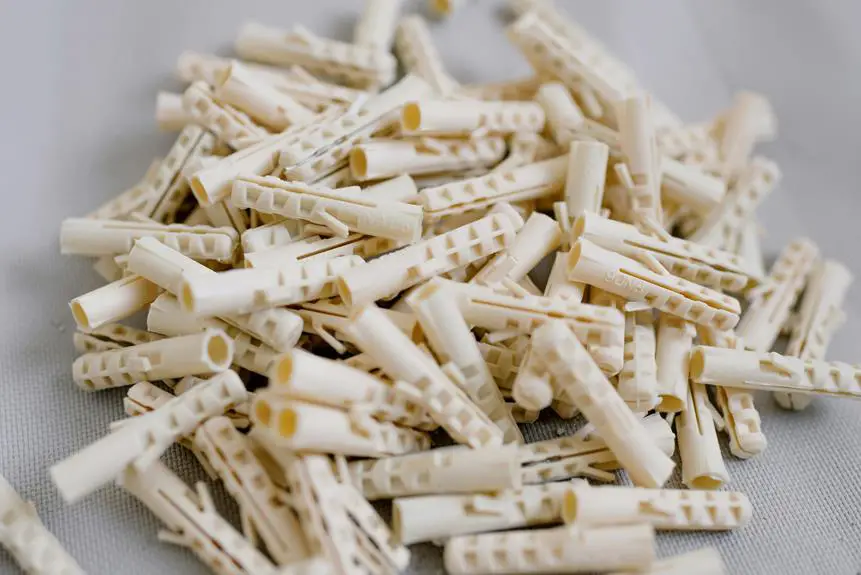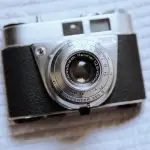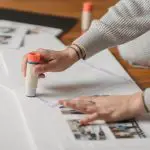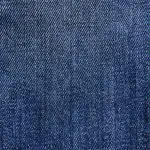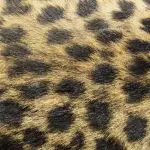When you find a tear or frayed edge on your favorite fabric, fabric glue can be a practical solution that saves both time and effort. You'll want to start by selecting the right adhesive for your specific material, as not all glues are created equal. Once you've prepared the damaged area and chosen your glue, the application process becomes crucial to ensure a lasting repair. But before you rush into fixing it, understanding the nuances of each step can make a significant difference in the final outcome. What's the best way to approach this?
Table of Contents
Key Takeaways
- Choose the appropriate fabric glue based on the fabric type, ensuring flexibility for lightweight materials and strength for heavy fabrics.
- Prepare the fabric by cleaning the damaged area and trimming frayed edges for a smooth repair surface.
- Apply glue evenly and sparingly, pressing the fabric pieces together firmly and avoiding movement for a few minutes.
- Allow the glue to cure fully (24-48 hours) before washing and follow care instructions for longevity.
Choosing the Right Fabric Glue
When choosing fabric glue, you'll want to consider the type of materials you'll be working with and the intended use of the repair. Different glues work better on various fabrics, so it's crucial to match the adhesive to your project's needs.
For lightweight fabrics like cotton or silk, opt for a water-based fabric glue. This type remains flexible after drying and won't stiffen the material. If you're tackling heavy fabrics like denim or canvas, look for a stronger, more robust adhesive.
Also, think about whether the repair will be subjected to washing or heavy use. For items that will be laundered frequently, a washable fabric glue is essential. On the other hand, if your project is more decorative, a permanent fabric glue might suffice.
Don't forget to check the drying time. Some glues set quickly, while others may require a longer curing period.
Lastly, read the labels carefully. Ensure the glue is non-toxic and safe for your intended use, especially if you're working on items for children.
Preparing the Fabric for Repair
Before applying fabric glue, you'll want to prepare the fabric properly to ensure a strong bond and a successful repair.
Start by cleaning the area around the damage. Remove any dirt, dust, or grease, as these can interfere with the glue's adhesion. Use a damp cloth and a mild detergent to wipe the surface, then allow it to dry completely.
Next, assess the fabric. If it's frayed or has loose threads, trim these areas carefully using sharp scissors. This helps create a smoother surface for the glue to adhere to. If you're repairing a tear, gently align the edges to ensure they fit together well.
For fabrics that tend to fray, you might want to consider applying a little heat to prevent further unraveling. A quick pass with an iron on a low setting can help seal the edges. Just be careful not to damage the fabric.
Applying Fabric Glue Correctly
To ensure a strong bond, apply the fabric glue evenly and sparingly directly onto the damaged area. Start by squeezing a small amount of glue from the tube, and use the applicator tip to spread it across the fabric. You want just enough to cover the area without saturating it. If you use too much glue, it can seep through the fabric and create a mess.
Once you've applied the glue, press the fabric pieces together firmly. Make sure they align correctly, as repositioning may not be easy once the glue starts to set. Hold the fabric in place for a few seconds to allow the initial bond to form.
If you're repairing a larger tear, consider applying glue to both edges of the fabric before pressing them together. This technique helps ensure a more secure fix. After bonding the fabric, avoid moving it for at least a few minutes, allowing the glue to adhere properly.
Lastly, check the glue's drying time on the label. It's essential to give the fabric adequate time to cure completely before using or washing it again. A little patience goes a long way in achieving a successful repair.
Tips for Effective Repairs
1. Keep your workspace clean and organized to prevent any accidental spills or messes while repairing your fabrics. A tidy area helps you focus and ensures you have everything you need at hand.
Next, always test the fabric glue on a scrap piece of fabric before applying it to your repair. This way, you can check for discoloration or adverse reactions. When applying glue, use a small amount to avoid overflow—too much can lead to unsightly clumps and make your repair less effective.
Lastly, follow the manufacturer's instructions for drying times. Rushing this step can compromise your repair.
Here's a quick reference table to summarize some essential tips:
| Tip | Purpose | Outcome |
|---|---|---|
| Keep workspace organized | Prevent spills and distractions | Increased focus |
| Test glue on scrap fabric | Ensure compatibility | Avoid damage |
| Use small amounts of glue | Prevent overflow | Cleaner repairs |
| Follow drying instructions | Ensure strong bond | Durable repairs |
Caring for Repaired Fabrics
After completing your repairs, it's important to care for the fabrics properly to ensure the longevity of your work. Start by allowing the fabric glue to cure fully. This usually takes about 24 to 48 hours, depending on the product. Avoid washing the repaired items immediately; give the adhesive time to bond securely.
When it's time to clean, always check the care label first. If the fabric is machine washable, use a gentle cycle with cold water. Consider placing the repaired item inside a mesh laundry bag to protect it further. If hand washing, do so with mild detergent and avoid vigorous scrubbing over the repaired area.
For drying, air drying is your best bet. Lay the item flat or hang it up, but steer clear of direct sunlight, which can weaken the glue. If you must use a dryer, opt for a low heat setting and keep an eye on the item.
Lastly, avoid ironing directly on the repair. Instead, place a thin cloth over it if you need to press the fabric. Following these steps will help your repaired fabrics stay strong and looking great for years to come.
Frequently Asked Questions
Can Fabric Glue Be Used on Leather Materials?
Yes, fabric glue can be used on leather materials, but make sure to choose a strong adhesive designed for leather. Always test on a small area first to ensure it adheres well without damaging the surface.
Is Fabric Glue Washable After Application?
Yes, fabric glue can be washable after application, but it depends on the specific product. Always check the manufacturer's instructions for washing recommendations to ensure your repair holds up well in the laundry.
How Long Does Fabric Glue Take to Dry?
Fabric glue typically takes about 24 hours to fully cure, but it may feel dry to the touch within a few hours. Make sure to follow the manufacturer's instructions for best results.
Can Fabric Glue Be Used for Outdoor Fabrics?
Yes, you can use fabric glue on outdoor fabrics. Just make sure it's specifically designed for outdoor use to withstand weather conditions. Always follow the manufacturer's instructions for the best results and durability.
What Should I Do if Fabric Glue Dries Clear?
If fabric glue dries clear, don't worry! You can carefully trim any excess glue with scissors. Ensure the fabric's edges are neat, and if needed, apply a bit more glue to reinforce the repair.
- Tetron Fabric for Marine Applications: Durability and Use Cases - June 18, 2025
- Tetron Fabric for Outdoor Furniture: Weather Resistance and Care - June 18, 2025
- Tetron Fabric for Wall Coverings: Style and Application Tips - June 18, 2025

